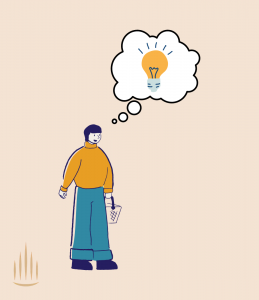The overall research showed that this generation are, at heart, generous and want to do more. They understand how lucky they are to be in their situation but sometimes the other, seemingly more immediate, pressures of life have to take priority and giving takes a back seat. However, when challenged to think about giving they are engaged and thoughtful, wanting to know more and make plans that fit into their lifestyle and longer-term family plans.
I think having to think about why you do what you do or what you get from it was quite tricky, I think we all do it to get the satisfaction that you’ve done something good but probably don’t think of it that way unless asked to look deeply. North
So, what can be done to fit giving into the routine of busy lives, or to motivate these young wealth creators to do more?
In a world dominated by easy access information and short sound bites, charitable organisations can streamline their communications to be front and centre of a potential giver’s thoughts.
We found that charity is thought of as local and personal. Some charitable activities, notably the arts and advocacy, are not really thought of as charitable when a young wealth creator is making a donation decision. Sometimes it’s personal as they know someone who has been through a trauma or had a disease. Sometimes there’s a “there but for the grace go I” empathy. Charities not on the radar of givers need to do more to show that they are charitable and how they directly impact lives.
However, there is a sense of fatigue at the number of sponsored events that happen, especially in large workplaces and the feeling that then charity is done. There is also a need to know where the donation will go and that it will be useful, therefore charities that appear wasteful are rejected.
The go-to charities have solid reputations and easy-to-understand messaging. They produce images and stories that resonate on a personal level. They show the outputs of their work in smiling faces and stories of named people. They show the direct impact of a donation to a person or activity that the donor can visualise easily. They provide tech enabled giving solutions that allow forgive-and-forget giving but that can be the start of regular giving over a long time period.
As yet these busy young people have not had time to fit giving decisions and planning into their lives. They do think carefully about their environmental impact and the social justice in their surroundings, but it is not associated with “charity” but behaviour and is not part of considering a holistic lifestyle. However, when their thoughts are provoked, they have the desire to contribute more, on their terms.
Successful interventions fit into their lifestyle and are relevant to professionals on a career path.
So how can charities engage better?
Our participants responded well to…
- Localised stories where people were humanised, with names and faces
- Clear objectives and the way that a donation or act creates change with suggested amounts and what that would achieve
- Tech enabled (text message, direct debit sign up) but not complex methods to give
- Suggested support beyond the financial – items that people really need that can be donated
- Something that they can be proud of even if they don’t speak about it




